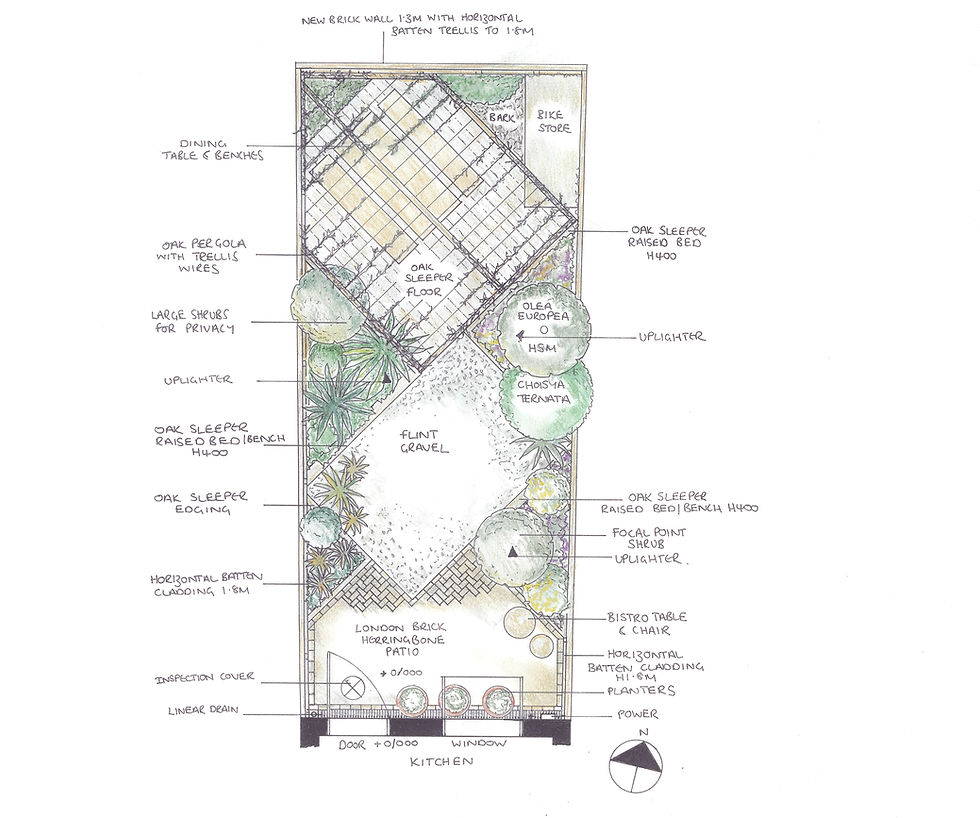Designing small gardens - angular design and other tips
- Sarah Kay

- Jan 28, 2021
- 2 min read
Most of my design projects tend to be for smaller urban East London gardens, usually part of a Victorian terraced house and overlooked on three sides.
How do you design these gardens to make the space appear larger but also functional and beautiful?
Rectilinear Designs
A rectilinear design is one based on shapes and lines drawn at right angles to the house with proportions driven by the architecture. This provides a strong direction and order for the design and immediately links it to the house. Overlapping shapes and the dissection of a garden into 'rooms' help ensure that this doesn't just become a 'lawn in the middle, beds down the side' design. Rectilinear designs can also help establish order where a garden has awkward boundary angles.

Angular Designs
An angular design is drawn at 45 or 60 degrees to the house but with lines 90 degrees to each other. This avoids acute angles which are difficult to build and not pleasing on the eye. This form of design is very useful for a small garden or a long thin garden to avoid the eye being drawn directly down the middle of the garden to the back. An angular design draws the eye along the longest lines in the garden, the diagonals, and creates triangular planting areas which feel bigger and create a greater feeling of seclusion within the garden.

Other tips for helping to create a sense of space in a small garden are putting mirrors on the boundary, using light colour paving to reflect light, hiding the boundaries with climbers and trees and using a few large planters and simple paired back planting.
I'm currently working on an angular design for a wildlife friendly small garden in E8 which I look forward to sharing soon.







Comments